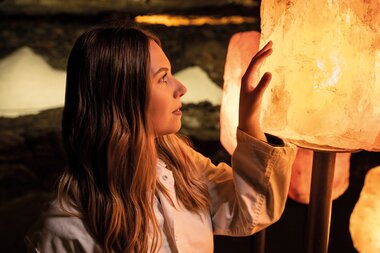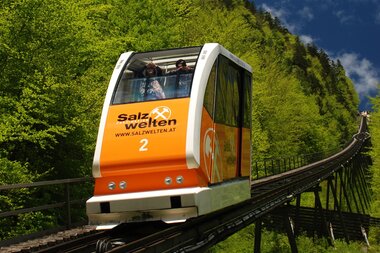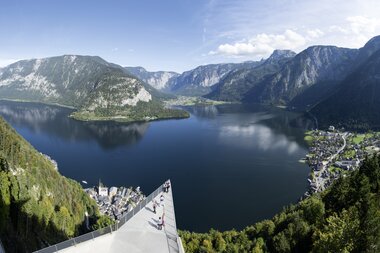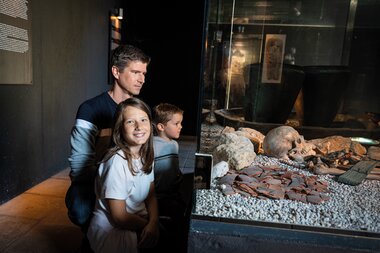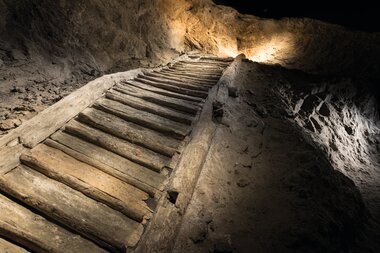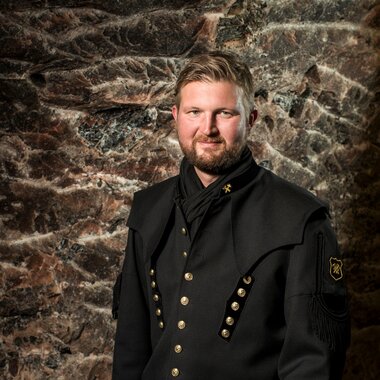Salzwelten Hallstatt
Archaeological showcase: in the world‘s oldest salt mine
With around 200,000 visitors in 2019, the salt mine in Hallstatt is an attraction of nationwide and international significance. The funicular was used by an additional 223,000 passengers, resulting in a grand total of 423,000 visitors.
Funicular and Skywalk
Rides up and down the mountain on the funicular can be booked separately from the salt mine itself. The pathway from the mountain terminal to the Hallstatt “World Heritage View” sky walk viewing platform, which was built in 2013, as well as the funicular are both barrier-free. A former fortification, known as “Rudolf’s Tower”, now houses a restaurant along with a free permanent exhibition on the first floor, dedicated to Johann Georg Ramsauer, the former mine supervisor responsible for conducting the first scientific excavations in this high valley.
The funicular up to the Hallstatt high valley rises 325 vertical meters in about three minutes. The “World Heritage View” skywalk treats visitors to a unique view of the UNESCO World Heritage Hallstatt – Dachstein Region.
Burial Grounds
From the mountain terminal of the funicular, visitors walk approximately 20 minutes to the start of the tour at the Knappenhaus, a barracks building once used by miners. This path leads across the historic burial grounds which would ultimately lend their name to the “Hallstatt Period” (800-450 BCE). At 13 stations, info boards and a free app provide information about history and salt mining in the area.
Oldest wooden staircase in Europe, slides, a mine train and salt lake
The valuable natural resource, salt, has been produced in Hallstatt for 7000 years. The focus of the guided tour is on the historical significance of Hallstatt as well as salt mining. The “Man in the Salt”, who was discovered in 1734, is also highlighted. Popular aspects of the tour include a ride on the mine train, the subterranean salt lake as well as the longest underground miners’ slide in Europe (65 m). Using modern techniques and holograms, history is made easy for guests of all ages to understand.
2002 marked the discovery of a Bronze Age staircase, which has since been scientifically dated back to the year 1344 BCE. Making it the oldest preserved wooden staircase in Europe. Today, it is presented in the so-called “Bronze Age Cinema” deep below ground.
Cooperation between Natural History Museum Vienna and Salzwelten
A close collaboration exists with the Natural History Museum in Vienna. Every year in summer, research is conducted within the burial grounds as well as in the mine itself. By purchasing an admission ticket to Salzwelten Hallstatt, visitors also support scientific exploration at this location. A “Prehistoric Expedition” is offered in July and August to guests who have a particular love for history. Accompanied by archaeologists, this four-hour tour leads through the prehistoric part of the mine and grants fascinating insights away from the usual tour routes.
